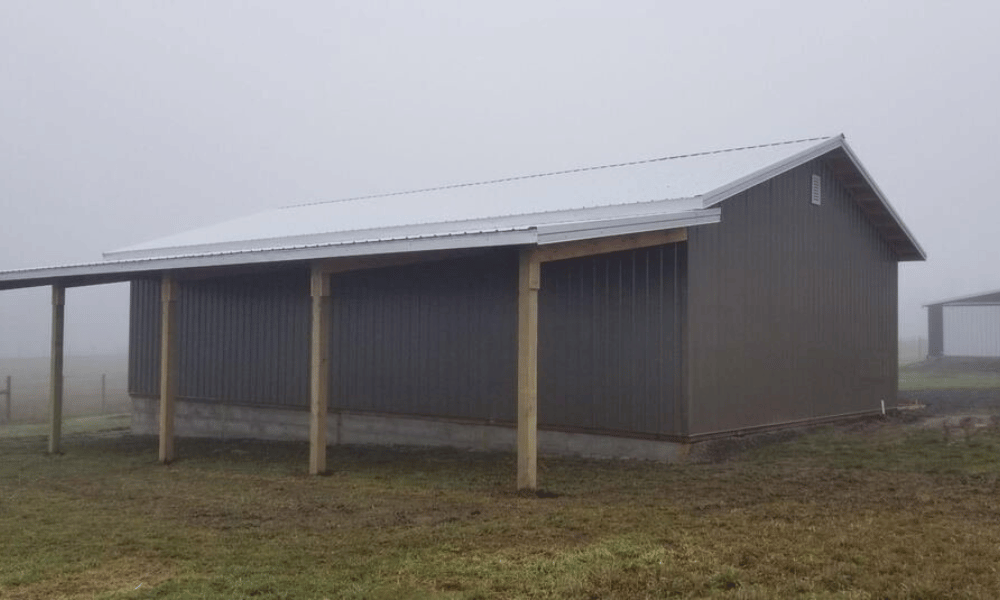Introduction
Building a pole barn garage has become an Pole Barn Garage Builders in Springfield increasingly popular choice for homeowners seeking additional storage or workspace. But is taking on a DIY pole barn garage project really worth it? In this article, we'll explore the pros and cons of a DIY pole barn garage project to help you make an informed decision. Whether you're an experienced builder or a novice handyman, understanding the benefits and drawbacks can save you time, money, and effort.
Understanding the Basics of a Pole Barn Garage
What is a Pole Barn Garage?
A pole barn garage is essentially a structure that uses poles to support its roof and walls. Unlike traditional garages built with concrete foundations and framing, pole barns are often simpler to construct. They're commonly made from wood or metal and provide excellent versatility in design.
Why Choose a Pole Barn Garage?
Choosing a pole barn garage can offer numerous advantages:
- Affordability: Generally less expensive than traditional structures. Quick Construction: Faster to put together compared to conventional builds. Versatile Designs: Can be customized easily to fit your specific needs.
The Pros of a DIY Pole Barn Garage Project
Cost Savings on Labor
One of the most significant benefits of undertaking a DIY pole barn garage project is the cost savings on labor. By doing it yourself, you can potentially save thousands of dollars that would otherwise go towards hiring contractors.
Flexibility in Design Choices
When you take on your own project, you have complete control over the design. Want larger doors for easier access? Prefer extra windows for natural light? A DIY approach lets you customize your space exactly as you envision.
Learning Experience
Building your own pole barn garage can be an incredibly rewarding experience. Not only will you learn valuable construction skills, but you'll also gain confidence in your abilities. This hands-on experience can inspire future projects.
Increased Property Value
Adding any type of garage adds value to your property. However, constructing it yourself can increase that value even more by showcasing your craftsmanship and attention to detail.
Environmental Considerations
When you build your own structure, you're in charge of sourcing materials. This means you can opt for sustainable options that minimize environmental impact—something many homeowners prioritize today.
The Cons of a DIY Pole Barn Garage Project
Time Commitment
While building your own pole barn may save money, it does require significant time investment. From planning and purchasing materials to actual construction days, this project could take weeks or even months depending on its complexity.
Skills Requirement
Although some might feel confident taking on this challenge, not everyone possesses the necessary skills for construction projects. Mistakes can be costly—both in terms of finances and safety.
Permitting Challenges
In many areas, you'll need permits before starting construction on any structure. Navigating local regulations can be confusing and time-consuming; if not handled correctly, it could lead to fines or best pole barn garage builders having to tear down what you've built.
Potential Quality Issues
Without proper experience or guidance, there’s always the risk that quality may suffer during construction. A poorly constructed barn could lead to structural issues down the road—leading to higher maintenance costs later on.
Weather Dependency
Weather conditions play a crucial role in construction timelines; adverse weather could delay progress significantly. Planning around seasonal changes may complicate scheduling further.
Weighing Your Options: The Pros and Cons of a DIY Pole Barn Garage Project
In summary, taking on a DIY pole barn garage project presents both opportunities and challenges. On one hand, potential cost savings and flexibility make it attractive; however, time commitment and skill requirements should not be overlooked.
Key Considerations Before You Start Your DIY Project
Assessing Your Skill Level
Before diving into construction plans, take stock of your current abilities:
- Are you comfortable using tools? Do you have experience with similar projects? Can you read blueprints?
Understanding where you stand will help gauge whether this is truly something within reach for you.
Budgeting Wisely
Creating an accurate budget should be at the top of your priority list:
Materials Costs: Factor in all supplies needed—from lumber to roofing materials. Equipment Rental: If tools are required that you don’t own already. Permit Fees: Don’t forget about necessary permits!Being realistic about costs helps prevent financial surprises along the way.
FAQs About Building Your Own Pole Barn Garage
1. How long does it typically take to build a pole barn garage?
It depends largely on size but expect anywhere from 2 weeks up to several months based on individual schedules and available help.
2. Do I need special permits for my pole barn garage?
Yes! Most regions require permits for such constructions; check with local authorities before beginning any work.
3. What materials do I need for building my own pole barn?
Key materials include lumber (for posts), roofing material (metal or shingles), siding (wood or metal), insulation (optional), plus hardware like bolts/screws/nails!
4. Can I insulate my pole barn garage?
Absolutely! Insulation options exist depending upon climate considerations—think foam boards or fiberglass batts!
5. Is it possible to convert an existing structure into a pole barn garage?
Yes! Many individuals repurpose old sheds or barns into functional garages through renovation efforts while adhering strictly to building codes!
6. What are common mistakes during construction?
Some newbies overlook leveling ground properly which leads them into problems later down line—always double-check measurements first!
Conclusion: Making the Right Choice for You
Ultimately when considering the pros and cons of a DIY pole barn garage project, it boils down to personal circumstances including skill level, budget constraints versus desired outcomes! By weighing these factors carefully prior starting out—you’ll set yourself up nicely for success! Whether choosing independence through self-construction or opting professional assistance—the goal remains creating functional space tailored just right for YOUR unique needs!
